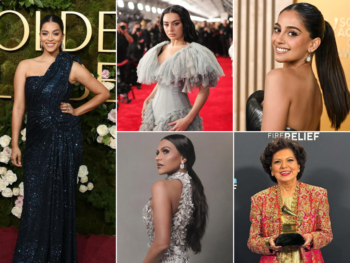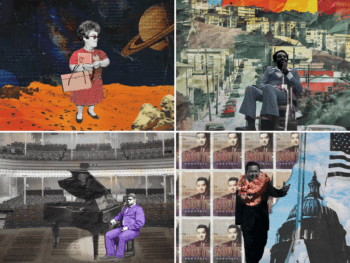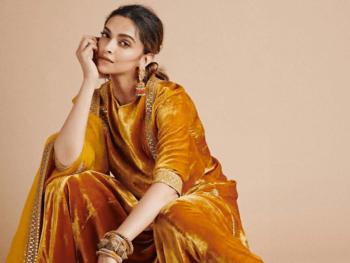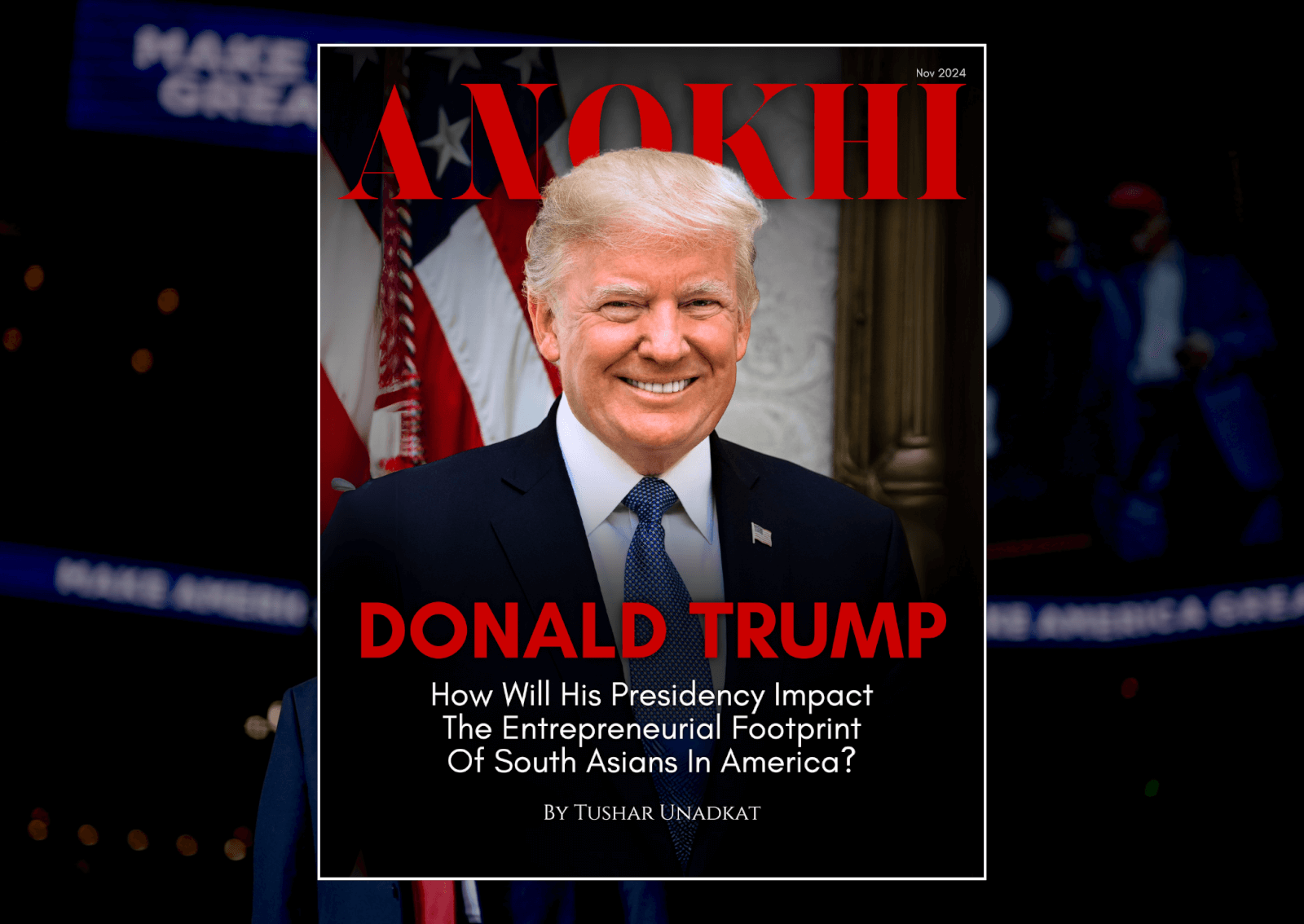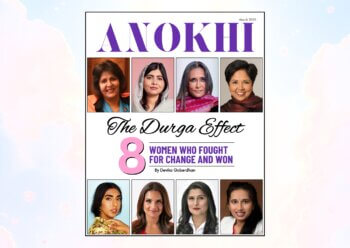
The latest ‘in style,’ South Asia’s fashionable, fast-paced transition from Bollywood to catwalks, celebrities and Hollywood.
If you take a quick glance at the 2011 Resort collection from Mark Badgley and James Mischka—or anything Alberta Ferretti has done this year—you’ll notice a myriad spectacles: heavily beaded frocks, scintillating silks and yards of bright, metallic fabrics. If you ask Canadian designer, and one-half of the Kavi Kavi brand, Dipika Gupta, how she would describe South Asian style, she would declare “everything Badgley Mischka and Ferretti has portrayed this season” as archetype Indian.
Although it may be apparent to the keenest of observers that South Asian style has been influencing Hollywood designs for decades, it is only now that those of us who aren’t as keen are taking notice. Sitting in a mini conference room in Gupta’s apartment complex, my not-so-keen Western mentality was given an Eastern overhaul as we chatted about the masses of celebrities and designers who flock to South Asian-inspired frocks in—what some have been referring to as—a “Bollywood invasion of Hollywood.”
The Westernization of South Asian attire cannot be pin-pointed to an exact time, location or particular starlet, but if media attention could rightly testify, it would shine a floodlight on big-screen starlets Goldie Hawn and Shirley MacLaine; both actresses were at the forefront of the 1960’s boho movement and the first high-profile celebrities to don the free-flowing gowns and saris. Some may recall Princess Diana’s delicately beaded, ivory salwar kameez she donned on a trip to Lahore, Pakistan, or the antique, threadwork-embroidered lehenga Victoria Beckham beautifully showcased on the November 2008 cover of Vogue India. Others may remember the dress code of pink saris and turbans as Elizabeth Hurley wedded Arun Nayar in Jodhpur, India. For those with floundering recollections, just type Katy Perry’s name into any search engine to find heaps of information regarding her recent nuptials to Russell Brand in Northern India; or watch her performance at this year’s Grammy Awards to see Brand slip a ring on her henna-covered finger. Regardless of what mental image you conjure up at the mention of South Asian style, the fact is that this trend has become a viral phenomenon in the Western world.
“It makes me feel good to see celebrities wearing Indian designs,” says Gupta. “Having your culture recognized is always a flattering feeling.” Gupta says that terming this phenomenon a “Bollywood invasion” is not entirely an accurate depiction: “Bollywood stars try to modernize. Celebrities, on the other hand, always wear what’s traditional—they always go back to what Indian style represents,” she says. Although the textured silks and bright, metallic materials is similar across all semblances of South Asian fashion, it is only with designers’ deeply-rooted admiration of this particular culture that enables fashion-watchers to recognize the absolute sophistication of recent designer couture and feel nothing but jaw-dropping reverence towards them.
The shift toward such ready-to-wear designs has grown slowly, but the recent releases of Hollywood blockbusters Slumdog Millionaire and Eat, Pray, Love has catapulted the developing trend into worldwide recognition and has played a part in successfully convincing everyday individuals to pre-order a bindi and book the first flight to India. Likewise, as Gupta says, more and more Indian actors are starring in Hollywood movies and major modelling agencies are begging for an Indian face. Just last season two major fashion companies, Prada and Louis Vuitton, gave the ultimate accolade by designing lines that completely encompassed Indian culture. Prada released a line of traditionally woven flats and sandals called Made In India to pay homage to the artisan craft. At the same time Louis Vuitton released a collection of limited-edition sari dresses elegantly designed by Marc Jacobs in celebration of Diwali, the five-day festival of lights, appropriately titled Louis Vuitton and Diwali. In a recent CNN article, the company says, “Louis Vuitton has always endeavoured to be as close and involved with the India of today, the emerging economy that occupies an increasingly important place in the globalized world, as with traditional India, the country of exceptional arts, crafts and the written word.”
The same can be said for Dipika and her twin sister Ravika as they prepare for the next phase of their Kavi Kavi brand. Having recently been signed to a major manager in New York City, the twins are entirely committed to infusing their designs with considerable Indian flair. They have always credited their culture as the root of their inspiration. “We come from a country that is full of colour, texture and vibrancy,” says Gupta, “There is so much beauty in the traditional designs and we are automatically geared towards it.” Luckily for them, their S/S 2012 collection will literally bring them back to their roots; they will be travelling to Rajasthan, India (appropriately known as the land of colours) for two months to draw from the same visual inspiration that stimulates creativity in today’s most notable designers.
Although, as a keen observer of style wherever I venture, I can’t say that I’ve recognized many Canadians taking the plunge into the sea of saris, kurtas and bindis—if anything, they’re just patiently waiting. With the upcoming collection from Kavi Kavi, however, such attire will (hopefully) be readily available to the Canadian public. And although the twins will be re-launching their brand out of New York City for business reasons, they ensure that the brand will remain proudly Canadian. “This is our way of giving re-birth to our company,” Gupta says. “It’s an emotional journey that combines a passion for fashion with a passion for our tradition.”
As we patiently wait for Kavi Kavi’s new line (which is so diligently veiled until the New Year) we have no choice but to venture elsewhere to feed our South Asian addiction. While the chances of another A-lister tying the knot in the “land of colours” is less likely for the coming months, a top designer releasing a South Asian-infused line is not. “I come from a culture that is so artistically fast-forward,” says Gupta. “As a designer, I think I’m blessed to be Indian.”
BY JEFF ELLIOTT / PUBLISHED: THE PASSION ISSUE MAY 2011


















































